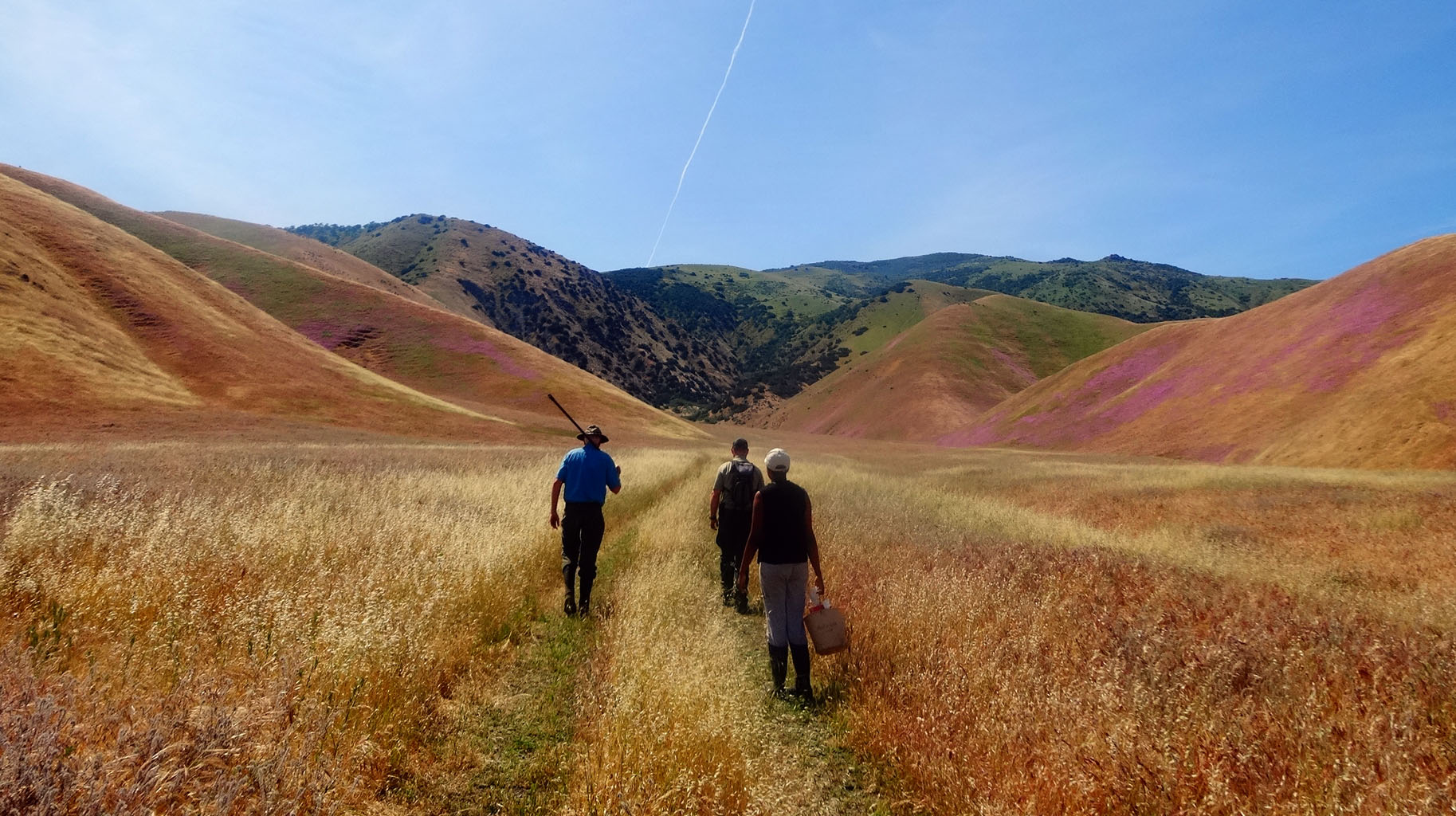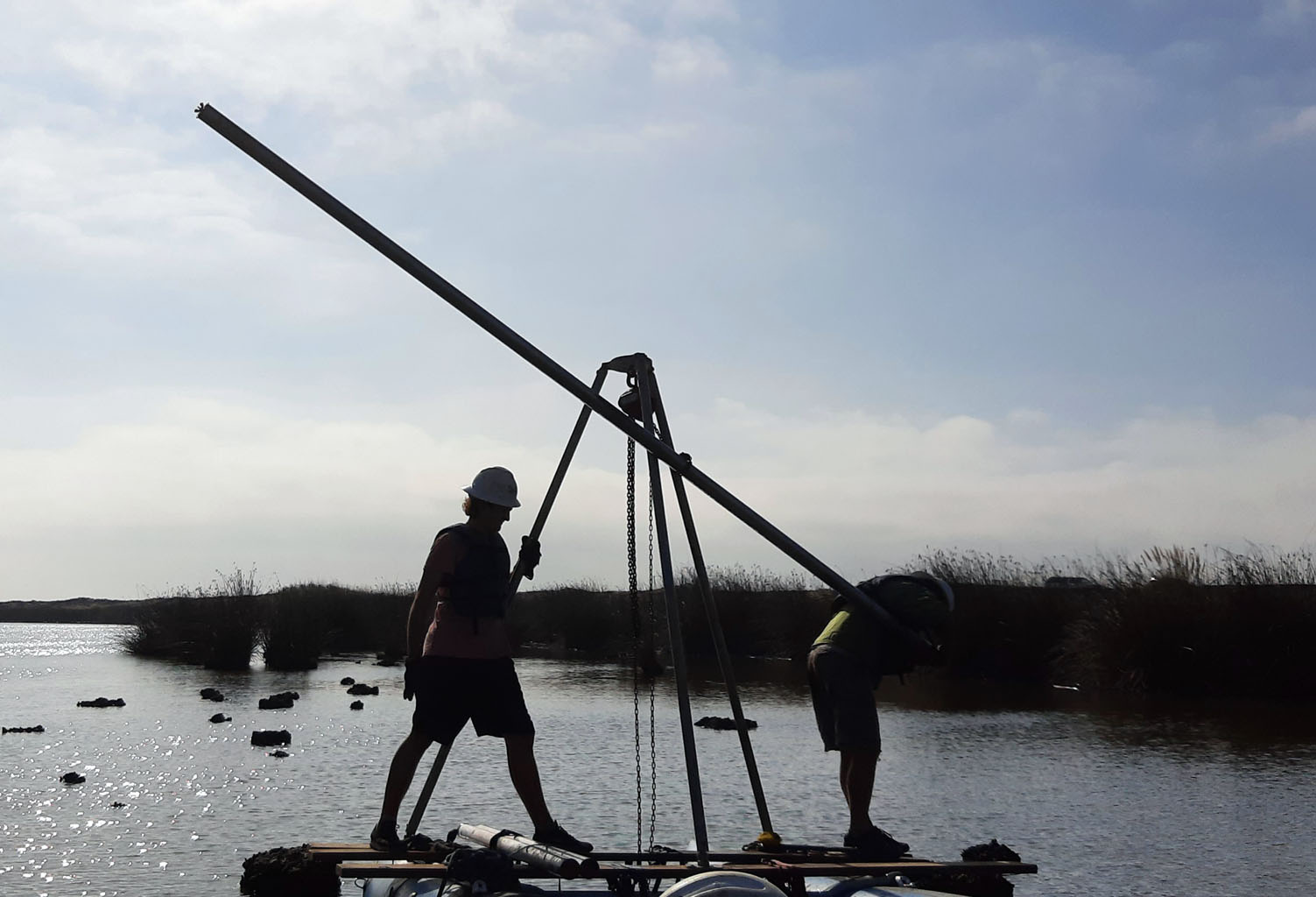In December 2021, we did the first coring campaign of the MeSCAL project in SoCal. We were lucky to work in two incredibly beautiful scenarios: the Ventura coastline (left) and the Transverse Mountains, Kern County (right: San Emigdio Mountains blooming in springtime).
Coring of McGrath Lake, Ventura
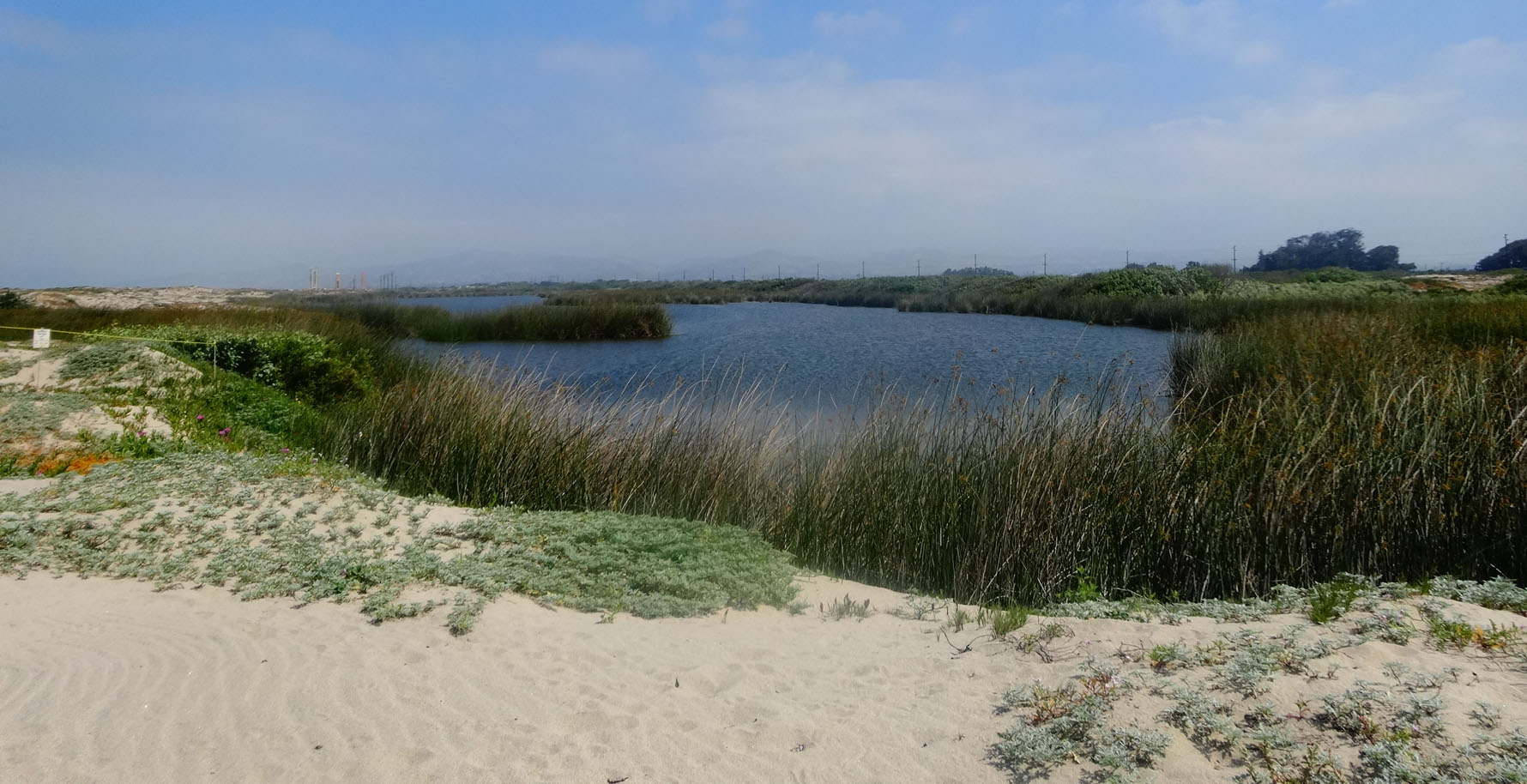
McGrath Lake is a rare freshwater lake in the Ventura shoreline. It lies in a dune swale within the Santa Clara River Mouth. Even though its origins are unknown, it appears in 19th century historical maps . Coring and dating of records within MeSCAL will unravel the age of this interesting wetland located at only 8 km south of the San Buenaventura Mission!
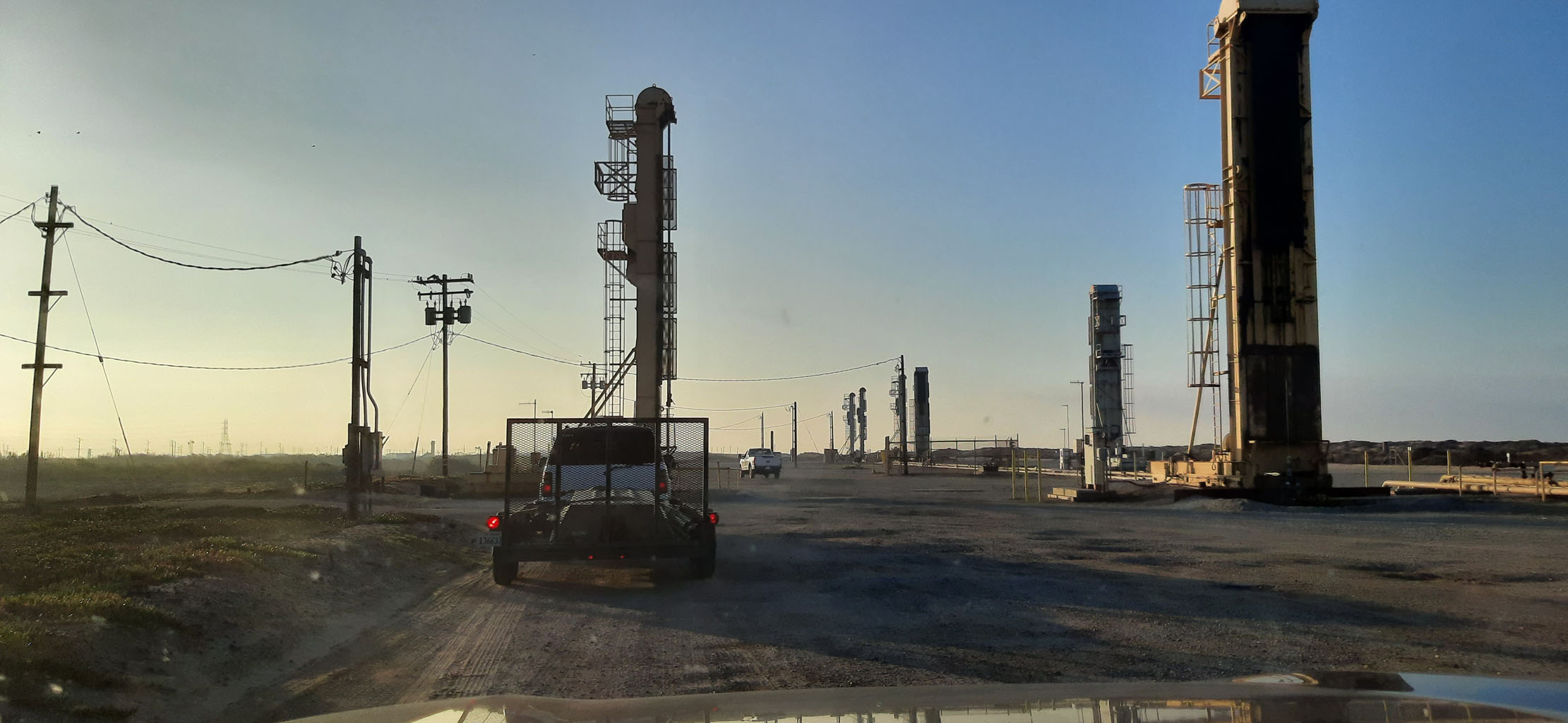
Arriving to McGrath with the coring equipment. This looks like more the play set of an apocalyptic movie than a coring location, but this is what happens when conducting research in highly developed urban areas as Ventura. McGrath Lake lies adjacent to a power generating field, and we are grateful to the company for kindly allowing us to use their gravel roads to access the lake with the coring equipment and conduct our research.
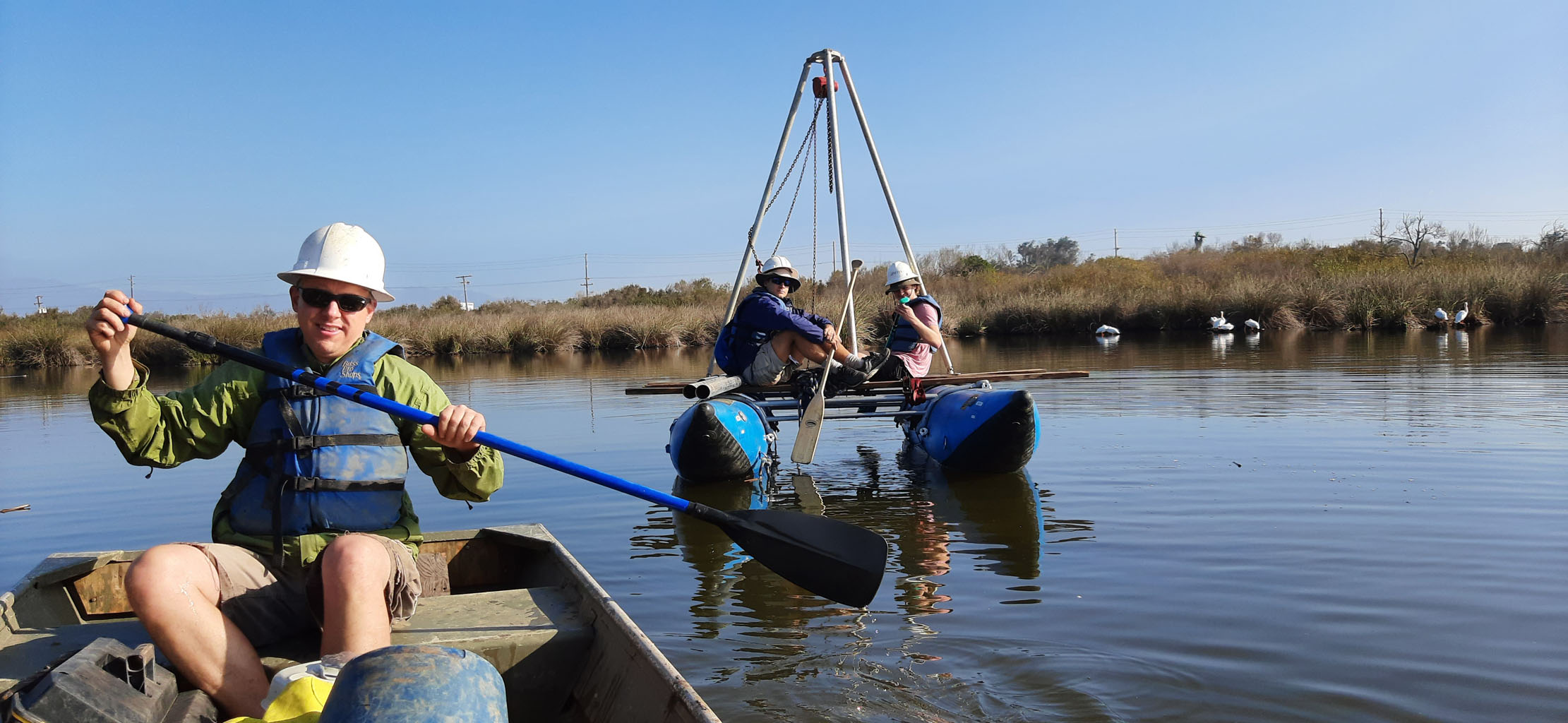
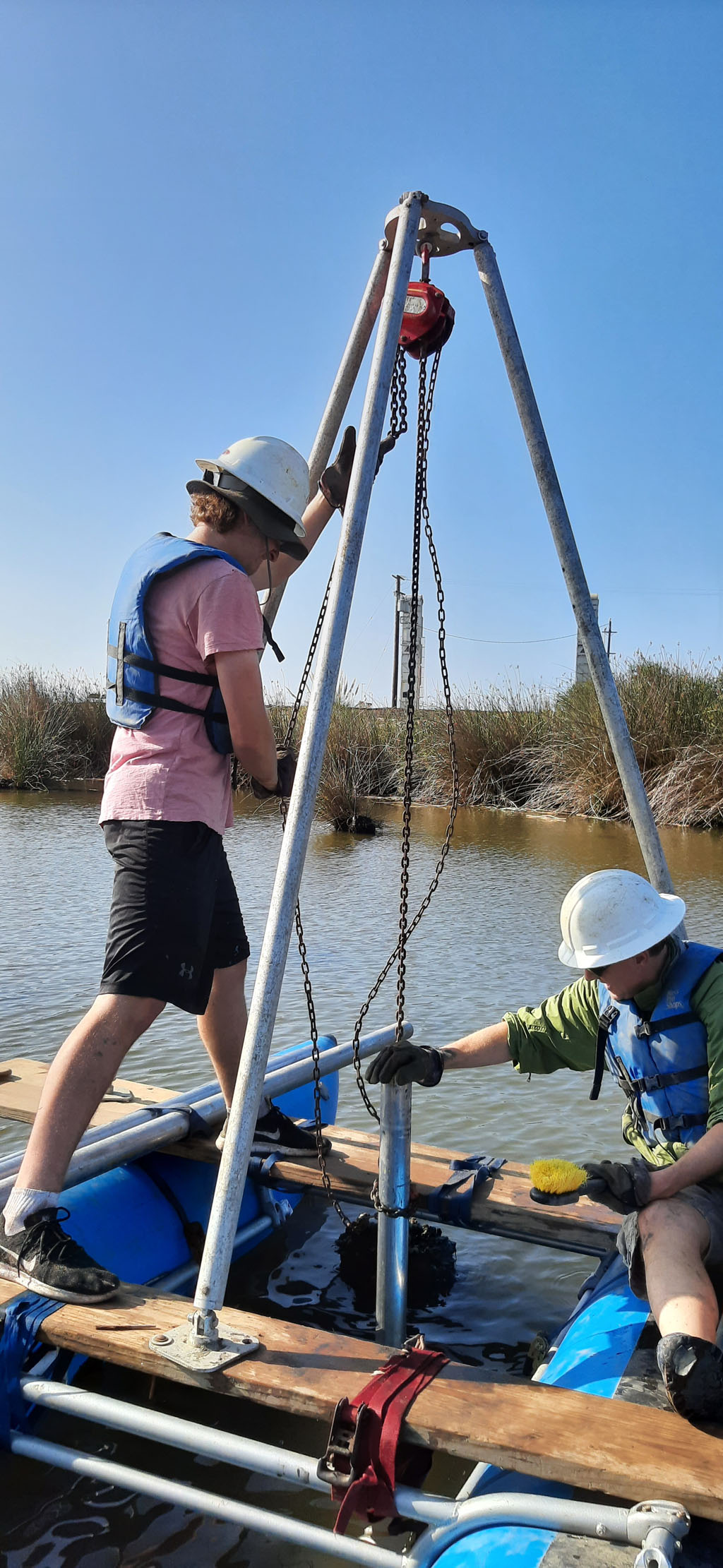
So fun and challenging using a vibracorer on a lake platform! We got a c. 3 meters-long record with a nice stratigraphy of organic sediments and inter-bedded sand layers, posible paleotsunamis/storms deposits?
Coring in the Transverse Ranges, Kern County
We also conducted fieldwork in our d backcountry area in the Kern Country. In 2019-2020 we surveyed several wetlands within the CNRS-PICS “MOTION” project in the San Emigdio Mountains. However, we did not success in finding a wetland with a good pollen preservation. We decided then to core Gorman pond, a sag pond along the San Andreas Fault located just south of the Tejon Pass, at the boundary between the San Emigdio and Tehachapi Mountains. The pond is located in a major prehistoric and historic pathway linking southern and northern California. Known during the Spanish period as the Camino Viejo, it was the main road crossing inland California.
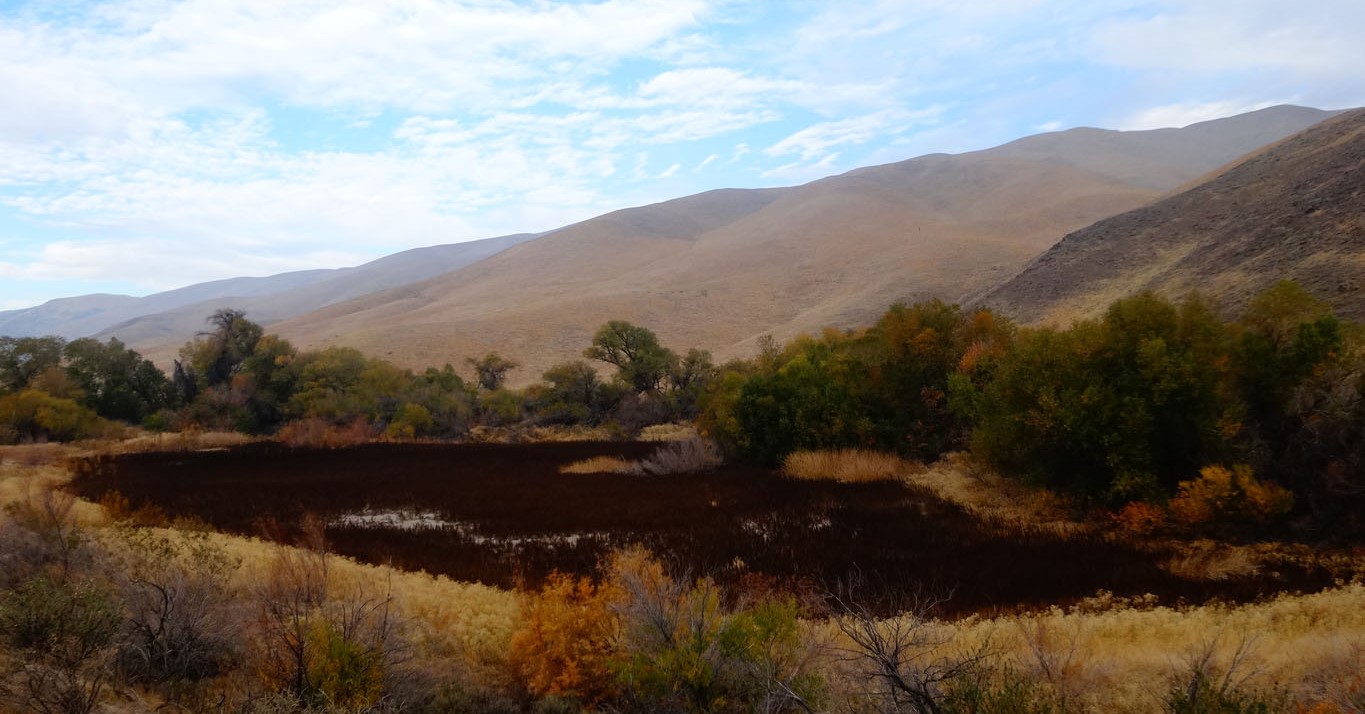
The pond, usually wet in the winter time, was completely dried in December due to low rainfall this fall. This was good for us since we could easily access with the vibracorer without having to mount the lake platform! platform!
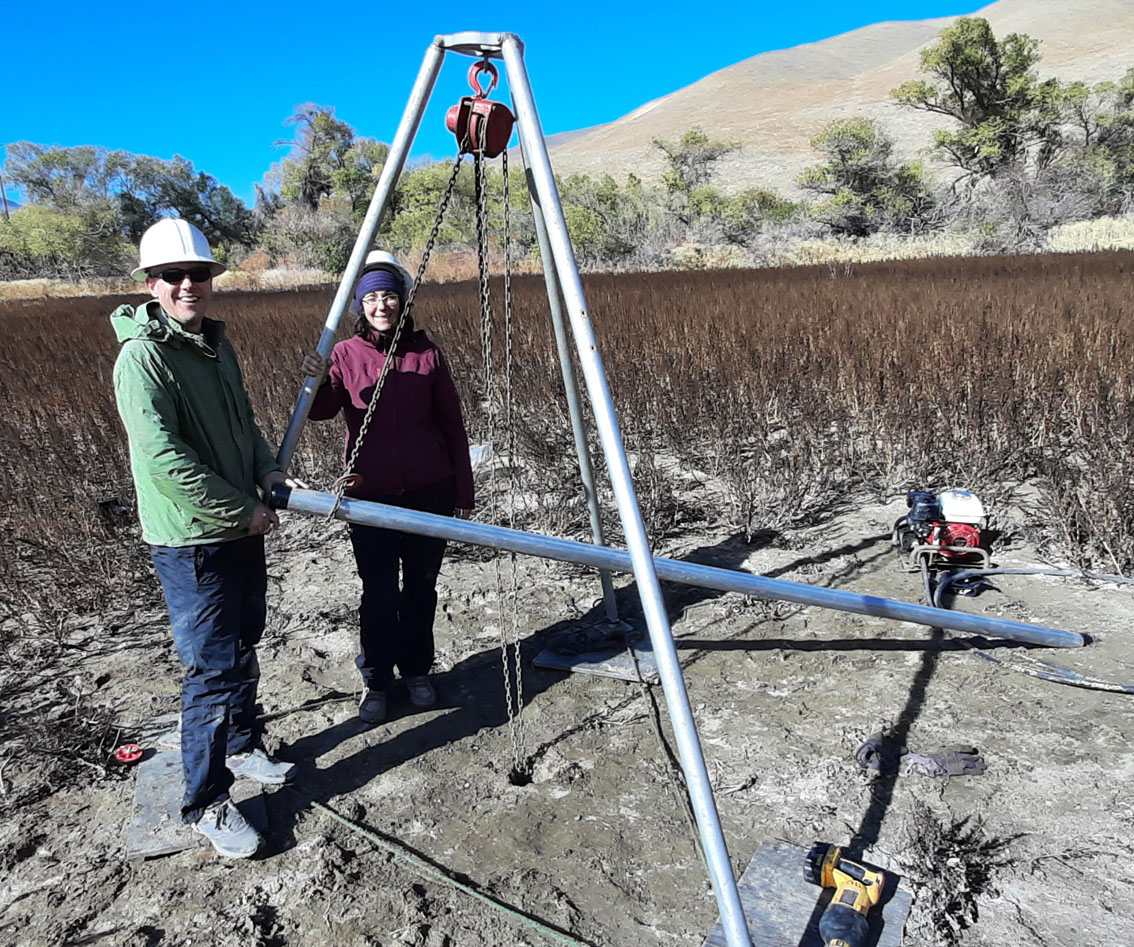
After several tries, we recovered a nice 4 m-long organic record! Radiocarbon dating and pollen and diatom tests are “en route” for assessing the suitability of this record for MeSCAL. We cross fingers since palaeoecological research in the area is very rare!!



